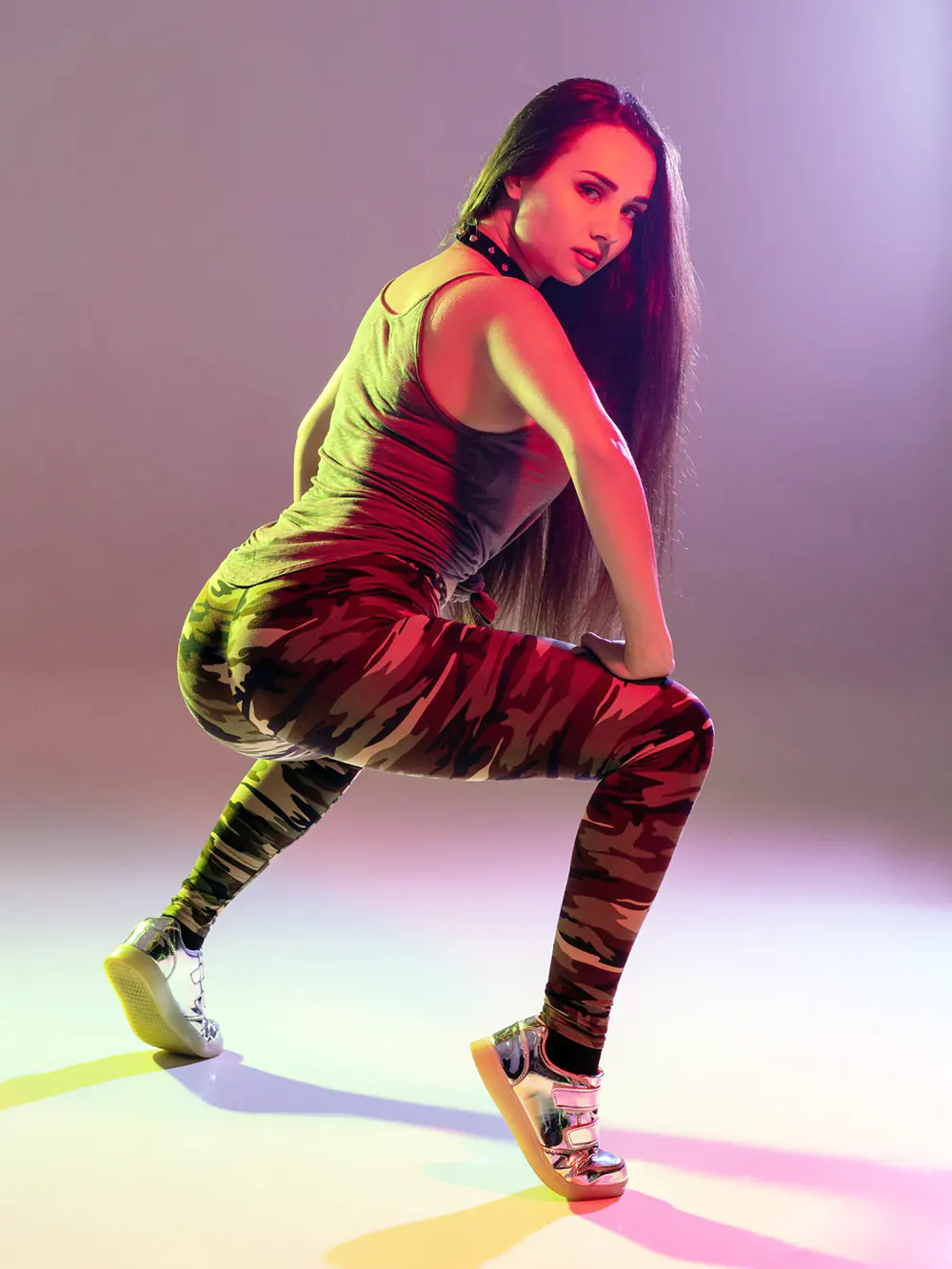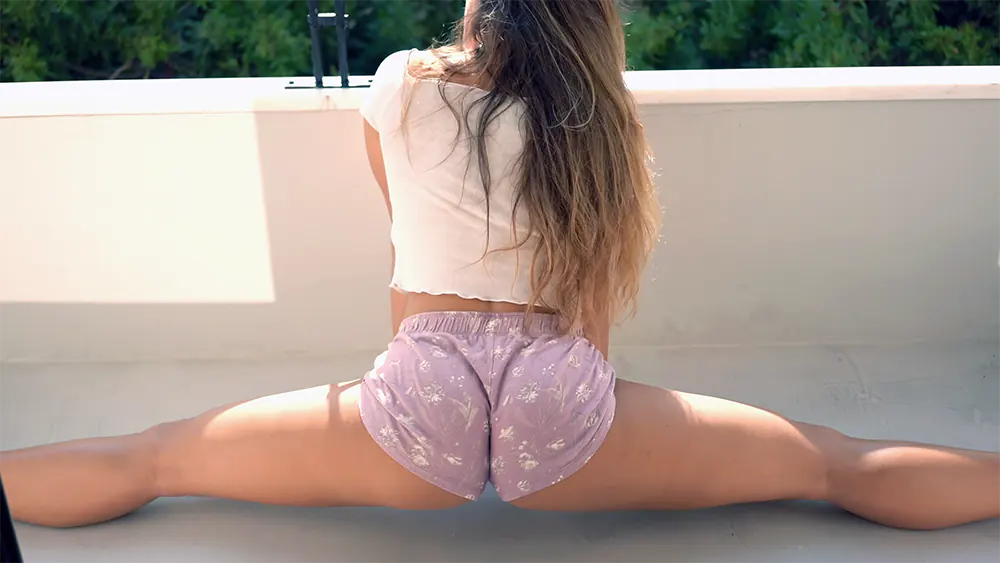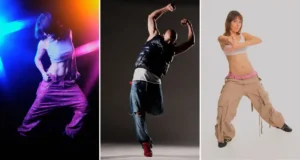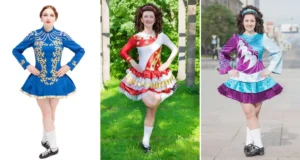In the world of dance, a fascinating and controversial phenomenon has taken the spotlight in recent years: twerking. But what drives girls to engage in this expressive and energetic dance style? What motivates them to sway their hips and move their bodies with mesmerizing rhythm?
The reasons behind why girls twerk are as diverse as the individuals themselves. From self-expression and cultural connection to exercise and creative exploration, the motivations are as unique as the girls who take part in this art form.
This article will delve into the fascinating twerking world and uncover the various factors that inspire girls to embrace this dance style. Prepare to be enlightened and perhaps surprised as we unravel the captivating reasons why girls choose to twerk.
Why do girls twerk?
Twerking is a dance move involving shaking and gyrating the hips provocatively. It has recently gained popularity, particularly in certain music and dance culture genres. While people of any gender can perform twerk, here are all possible reasons why do girls twerk.
To Relieve Stress
Girls twerk as a means to relieve stress. Twerking allows them to let loose and release the built-up tension in their bodies. The bouncy movements involved in twerking can have a therapeutic effect, helping them to feel more relaxed and at ease.
By engaging in these energetic movements, girls can experience a sense of release and find an outlet for their stress. The rhythmic and dynamic nature of twerking allows them to channel their emotions physically, which can contribute to a sense of well-being.
This form of dance enables girls to momentarily disconnect from their daily worries and immerse themselves in the present moment, fostering a temporary escape from the pressures and anxieties they may be experiencing.
Twerking, in this context, serves as a physical and emotional release, promoting relaxation and offering a respite from the stressors of everyday life.

As an Art Form
Some girls choose to twerk because they view it as an art form. They have dedicated time and effort to training in twerking and see it as a way to express themselves through music and rhythm artistically. Like any other dance style, twerking requires practice, coordination, and a sense of style.
Girls who engage in twerking often put in the work to develop their skills and perfect their moves. They see it as a dance that allows them to showcase their creativity and ability to synchronize their movements with the beats of the music.
Twerking, in this sense, becomes a means for these girls to display their talent and passion for dance. They strive to bring a unique flair and personal touch to their twerking performances, treating it as a form of artistic expression that allows them to communicate their emotions and connect with others through the power of movement.
For Exercise
Some girls twerk for the purpose of the exercise. Twerking involves movements that activate the gluteal muscles and thighs, resulting in a cardiovascular workout. Girls can target these specific muscle groups and get their hearts pumping by engaging in twerking. They choose to twerk to challenge themselves physically and reap the health benefits of this form of exercise.
Twerking requires coordination and control, which adds to the intensity of the workout. It can be an enjoyable and energetic way for girls to get their bodies moving and increase their overall fitness level.
Twerking, in this context, becomes a means for girls to incorporate physical activity into their routine while having fun and grooving to the music. Regularly practicing twerking can strengthen their muscles, improve their endurance, and enhance their cardiovascular health. It serves as an engaging form of exercise that girls can actively participate in and derive both physical and mental benefits from.
To Build Confidence
Girls twerk as a way to build confidence. By mastering an unconventional dance style like twerking, they can experience a sense of empowerment and self-assurance in their abilities. Twerking offers a platform for girls to showcase their skills and express themselves in a unique way.
As they become more proficient in twerking, their confidence grows both on and off the dance floor. Mastering this dance style gives girls a sense of accomplishment and pride in their achievements.
Twerking challenges societal norms and pushes boundaries, which can contribute to an increased sense of self-esteem. It provides an opportunity for girls to embrace their bodies and embrace their individuality. By embracing twerking as a dance form, girls can develop a stronger belief in their capabilities and develop a positive self-image.
Twerking becomes a source of empowerment, allowing them to break free from self-doubt and embrace their own unique style and expression.
To Attract Male Attention
Some girls twerk with the intention of attracting male attention. They know that twerking can be a provocative dance style that appeals to men and captures their interest.
The jiggly movements involved in twerking often highlight the buttocks, which many men find attractive. By engaging in twerking, these girls aim to showcase their physical attributes and allure in a way that specifically appeals to male preferences.
Twerking becomes a tool for them to express their sexuality and attract the attention of men. They seek validation or a sense of desirability by captivating male onlookers with their twerking moves. It is a deliberate choice to use twerking as a means of seduction or to incite desire.
These girls understand the power of their bodies and the effect that twerking can have on male viewers. By intentionally twerking to attract male attention, they aim to create a sense of allure, dominance, or sexual tension in their interactions with men.
As a Joke
Some girls twerk as a form of humor or joke. Instead of treating it as a serious or sexual dance, they twerk silly or exaggeratedly. The intention behind their twerking is to create a light-hearted joke or meme. They find amusement in the humor and absurdity of twerking.
For these girls, twerking is a way to playfully mock the popular perception and exaggerated portrayals of twerking in media and popular culture. By engaging in twerking as a joke, they can create a fun and entertaining atmosphere, often among friends or in social settings.
Twerking in this context becomes a comedic act, allowing girls to showcase their sense of humor and enjoy the reactions and laughter it elicits. It is a lighthearted way for them to engage in a dance style that is often associated with more serious or provocative connotations, adding an element of fun and amusement to the activity.
To Express Cultural Connection
For some girls, twerking serves as a means to connect with and express their cultural heritage. This connection is particularly relevant for girls with roots in cultures where twerking originated, such as parts of Africa and the Caribbean.
Twerking can be seen as a dance style deeply rooted in these cultures, carrying historical significance and traditional elements. By engaging in twerking, these girls embrace a form of expression that has been passed down through generations.
Twerking becomes a way for them to honor and celebrate their cultural identity. It allows them to connect with the music, rhythms, and movements with deep cultural meaning. Through twerking, girls can assert their pride in their cultural heritage and share it with others.
Twerking connects them to their ancestral roots, providing a sense of belonging and allowing them to preserve and showcase their cultural traditions. By embracing twerking, these girls express their cultural pride and contribute to preserving and appreciating their cultural heritage.

To Strengthen Social Bonds
Girls twerk as a way to bond socially. Twerking with friends can be a fun activity that brings them together and strengthens their social bonds.
When girls engage in twerking together, they share a common experience that creates a sense of intimacy and togetherness. It becomes a shared activity that fosters connection and camaraderie.
Twerking allows girls to let loose, have a good time, and enjoy each other’s company. The lively and energetic nature of twerking encourages laughter, cheering, and positive interactions, enhancing the social atmosphere.
By twerking as a group, girls can support and encourage one another, building a sense of unity and friendship. Twerking becomes a source of shared enjoyment and a way to create lasting memories.
Whether it’s at parties, dance classes, or casual gatherings, twerking can serve as a social activity that strengthens the bonds between girls and promotes a sense of belonging within their social circles.
Out of Curiosity
Some girls begin twerking out of curiosity or a desire to learn a new skill. They are motivated by the novelty and the opportunity to try something different. Like any dance trend, twerking piques their interest and ignites a sense of curiosity. They may be drawn to the unique movements and want to explore the dance style for themselves.
For these girls, twerking represents a chance to broaden their repertoire of dance skills and expand their horizons. It becomes a personal challenge and a way to step out of their comfort zone. By engaging in twerking, they satisfy their curiosity and fulfill their desire to learn something new.
The process of learning and mastering twerking can be both exciting and rewarding for them. They embrace twerking as an avenue for personal growth and self-discovery. Through this exploration, girls develop a deeper appreciation for different dance forms and expand their abilities, ultimately enriching their overall dance experience.
As a Creative self-expression
For creatively inclined girls, twerking is a platform for self-expression through dance and rhythm. Twerking offers them an unconventional outlet to showcase their artistic spirits in a distinctive way.
These girls see twerking as an opportunity to let their creativity shine and express themselves through movement. By engaging in twerking, they can convey their emotions, ideas, and individuality dynamically and visually captivatingly.
Twerking becomes a form of artistic expression where they can experiment with different movements, styles, and interpretations. It allows them to infuse their flair and unique interpretation into the dance, adding their artistic touch to the choreography.
These girls can tap into their inherent creativity and share their artistic vision with others through twerking. It becomes a means to communicate their thoughts and feelings non-verbally, transcending traditional forms of expression.
Twerking, in this context, becomes a powerful tool for these creative girls to unleash their artistic potential and captivate audiences with their unique dance expressions.

As a Rebellion
Some girls twerk as an act of rebellion. Twerking goes against social norms or expectations, and this taboo nature of the dance appeals to their rebellious side. These girls embrace twerking as a way to challenge societal boundaries and express their defiance against conventional ideas of acceptable behavior.
By engaging in twerking, they assert their independence and break free from the constraints imposed by society. Twerking becomes an act of liberation and a means to assert their individuality. These girls find empowerment in choosing a dance style that is often controversial and provocative.
By twerking, they take a stand and refuse to conform to societal expectations. It becomes a form of self-expression, allowing them to assert their rebellious spirit confidently. These girls showcase the willingness to push boundaries and challenge societal norms through twerking, embracing the freedom to express themselves in a way that may be perceived as unconventional or controversial.
To Immittiate Role Models
Some girls are inspired to twerk by observing other girls and women they admire. When they see their role models or idols twerking, it can serve as a motivation for them to try it themselves. These influential figures can have a significant impact on the choices and activities that girls engage in.
Girls are inspired to explore the dance style and emulate the movements they admire by witnessing their role models twerking. It becomes a way for them to connect with their idols and follow in their footsteps. The influence of these role models encourages girls to step out of their comfort zones and try something new, like twerking. It instills a sense of confidence and aspiration as they strive to embody the qualities they admire in their role models.
By engaging in twerking, they seek to emulate the grace, style, and charisma they see in their idols. Role models serve as a source of inspiration, motivating girls to explore twerking as a means to express themselves and showcase their talents.
What’s the point of twerking?
For many girls, the main point of twerking is self-expression, enjoyment, and having fun through dance. It can provide emotional and physical benefits, such as stress relief and feeling good. Twerking can also be a form of artistic expression, cultural connection, or confidence-building.
However, it is important not to reduce girls’ worth to their ability to attract attention or gain popularity. Not all girls twerk for male attention or sexual reasons; their motivations are varied and complex. The crucial aspect is that girls can choose whether and how they twerk, free from societal pressures. Supporting girls in pursuing activities that bring them joy and fulfillment while respecting their autonomy and ensuring their well-being is more important than the specific type of dance.
Ultimately, the point is to create a culture where girls are valued, respected, and in control of their bodies, regardless of how they choose to move.

Who said twerk first?
There isn’t a definitive answer for who said “twerk” first. The word’s origins are unclear and likely involve a combination of influences from different communities and cultures.
African and Caribbean dance styles involved shaking and twisting movements of the hips and lower body, later known as “twerking.” These dance forms date back for decades or longer.
African American Vernacular English, particularly in New Orleans and surrounding areas, where terms involving movement and dance were common. “Tewking” as a colloquialism may have developed gradually within these communities.
The bounce music scene in New Orleans in the late 1980s, where dancers reportedly began doing movements that would later be labeled “twerking.” This suggests the term has been used within that scene at the time.
The spread of hip-hop culture in the 1990s, when colloquial terms from southern Black communities gained broader exposure. “Twerk” could have reached national audiences through hip-hop music and culture at this point.
So while we can’t pinpoint an exact individual who first said “twerk,” the available evidence points to the word originating and developing within African American communities, likely in the New Orleans area, sometime between the 1980s and 1990s. The actual dance moves will likely have older roots in various African and Caribbean dance forms.
The word “twerk” only entered the mainstream lexicon in the early 2000s, but the dance and term have been evolving independently for decades within specific communities before that. So we never know precisely who coined the word, but it is almost certainly tied to the cultural history of dance and language within Black communities in the U.S. South.
How has twerking been portrayed in popular media?
Popular media has shown twerking in many ways. Several music videos, like Destiny’s Child’s “Bootylicious,” Beyoncé’s “Crazy in Love,” and Eminem’s “Ass Like That,” have featured twerking.
Artists such as Iggy Azalea have also incorporated twerking into their live performances. In popular culture, twerking is often associated with mainstream rap music and exotic dancing.
With the advent of social media platforms like YouTube, Instagram, and TikTok, it has become easy to share and popularize twerking videos.
However, some recent instances of cultural appropriation by mainstream media have portrayed twerking as trashy and degrading to women.
FAQ
How has the meaning and perception of twerking changed over time?
Twerking originates from African dances like Mapouka and Soukous and has a rich historical background. The term “twerking” emerged from New Orleans’ early 90s bounce scene, marking its entry into popular culture. Twerking has gained immense popularity recently, becoming a common sight in music videos, movies, and TV shows. However, the mainstream media’s embrace of twerking has resulted in cultural appropriations, causing it to be wrongly viewed as a trashy and degrading dance form for women. The influence of white America on the evolution of twerking has sometimes overshadowed its roots in Black culture.
What part of the body is used to twerk?
Twerking primarily uses the hips and buttocks. It involves shaking them rapidly in an up-and-down, bouncing motion. The dance requires strong muscles, particularly in the lower body, and includes a semi-squat-like movement with a wide stance, engaging the quadriceps. The main focus of twerking is on the buttocks, characterized by rapid and repeated hip thrusts and shaking, often performed while squatting.
What are the long term effects of twerking?
Twerking can have various long-term effects, both positive and negative. On the positive side, twerking can strengthen muscles throughout the body, particularly in the buttocks, leading to a more sculpted and toned appearance. It also increases hip flexibility and can boost confidence and enhance sexual experiences. Twerking can release happiness hormones like dopamine, oxytocin, serotonin, and endorphins, promoting stress relief and overall happiness. However, it’s important to note that twerking can potentially cause low back pain, especially for beginners or individuals with back injuries.



